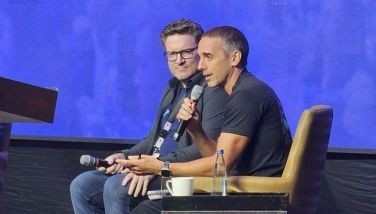The future of database technology
January 31, 2003 | 12:00am
SAN DIEGO, California – Ten years from now companies around the world will have only fewer but larger databases that will hold all information spanning their entire supply chains and that will give them a real 360-degree view of their customers.
Speaking on the second day of the recent annual Oracle Applications World conference here, Larry Ellison, chairman and chief executive officer of Oracle Corp., outlined the coming of integrated database for e-mail and other applications that users today still normally think don’t belong to a database. Examples of these are audio and video files, Powerpoint presentations, spreadsheet files and Word documents, among others that corporate users leave unmanaged in their file servers.
"Databases will hold everything… They will become huge, global and essential… It will be the cheapest place to store all information and (as a result) bring down management cost unlike in a file system," Ellison told a full-packed convention hall.
"Can you imagine the cost of maintaining 100 e-mail servers all over the world?" he asked. But by collecting all e-mail files inside a database, which Oracle did internally, Ellison said companies could save 80 percent of what they spend for multiple e-mail file servers.
"Even Microsoft said the future of Exchange is in SQL Server. The move is toward structured to unstructured, from exclusive to inclusive and to fewer and larger databases," Ellison stressed.
He singled out the online marketplace eBay and international credit card companies as good examples of "emerging information age" database users. On the other hand, he mentioned hospitals or health organizations, in particular, as those that should maintain a single national, if not global, patient database system. He said there are patients who died after being prescribed the wrong drugs that were not based on their health records.
"Bummer. That’s a database management problem," said Ellison.
Ellison went on stage declaring how Oracle was the first to have a modern and integrated suite of applications, which the company achieved by embracing Java and other industry standard technologies.
While its competitors like PeopleSoft and SAP continue to write on proprietary programming languages, Oracle, Ellison said, has moved to the "modern programming language" that is Java and in doing so, is able to gainfully add to the e-business suites of its ISVs (independent software vendors).
In terms of integration, Ellison strongly encouraged OAW attendees to constantly reduce the number of separate application databases that they run. "This is probably the single problem that causes most disappointment in using applications like CRM and ERP where you spend fortunes but don’t give you answers to basic questions as they are in separate systems," Ellison noted.
His solution: Consolidate all your little databases in one single database. Keep all information in one place so you know where to look. This should also see a company’s IT management cost dropping precipitously.
Ellison also took the time to sell Linux on Intel processors, not just because it’s a cheap platform but more importantly because of its clustering capabilities that result in better performance benefits.
Speaking on the second day of the recent annual Oracle Applications World conference here, Larry Ellison, chairman and chief executive officer of Oracle Corp., outlined the coming of integrated database for e-mail and other applications that users today still normally think don’t belong to a database. Examples of these are audio and video files, Powerpoint presentations, spreadsheet files and Word documents, among others that corporate users leave unmanaged in their file servers.
"Databases will hold everything… They will become huge, global and essential… It will be the cheapest place to store all information and (as a result) bring down management cost unlike in a file system," Ellison told a full-packed convention hall.
"Can you imagine the cost of maintaining 100 e-mail servers all over the world?" he asked. But by collecting all e-mail files inside a database, which Oracle did internally, Ellison said companies could save 80 percent of what they spend for multiple e-mail file servers.
"Even Microsoft said the future of Exchange is in SQL Server. The move is toward structured to unstructured, from exclusive to inclusive and to fewer and larger databases," Ellison stressed.
He singled out the online marketplace eBay and international credit card companies as good examples of "emerging information age" database users. On the other hand, he mentioned hospitals or health organizations, in particular, as those that should maintain a single national, if not global, patient database system. He said there are patients who died after being prescribed the wrong drugs that were not based on their health records.
"Bummer. That’s a database management problem," said Ellison.
While its competitors like PeopleSoft and SAP continue to write on proprietary programming languages, Oracle, Ellison said, has moved to the "modern programming language" that is Java and in doing so, is able to gainfully add to the e-business suites of its ISVs (independent software vendors).
In terms of integration, Ellison strongly encouraged OAW attendees to constantly reduce the number of separate application databases that they run. "This is probably the single problem that causes most disappointment in using applications like CRM and ERP where you spend fortunes but don’t give you answers to basic questions as they are in separate systems," Ellison noted.
His solution: Consolidate all your little databases in one single database. Keep all information in one place so you know where to look. This should also see a company’s IT management cost dropping precipitously.
Ellison also took the time to sell Linux on Intel processors, not just because it’s a cheap platform but more importantly because of its clustering capabilities that result in better performance benefits.
BrandSpace Articles
<
>
- Latest
Latest
Latest
Recommended






























